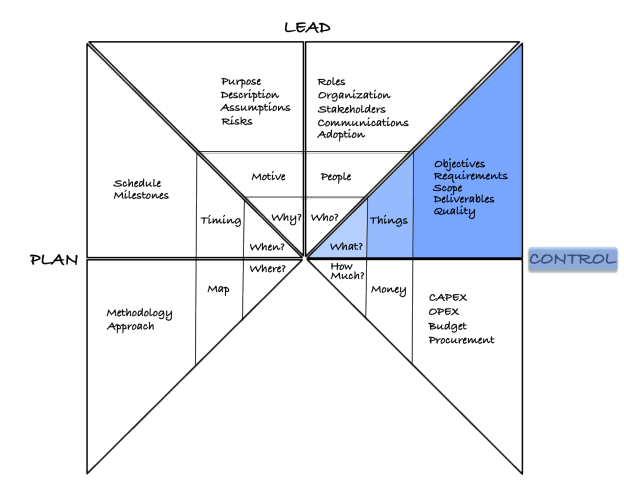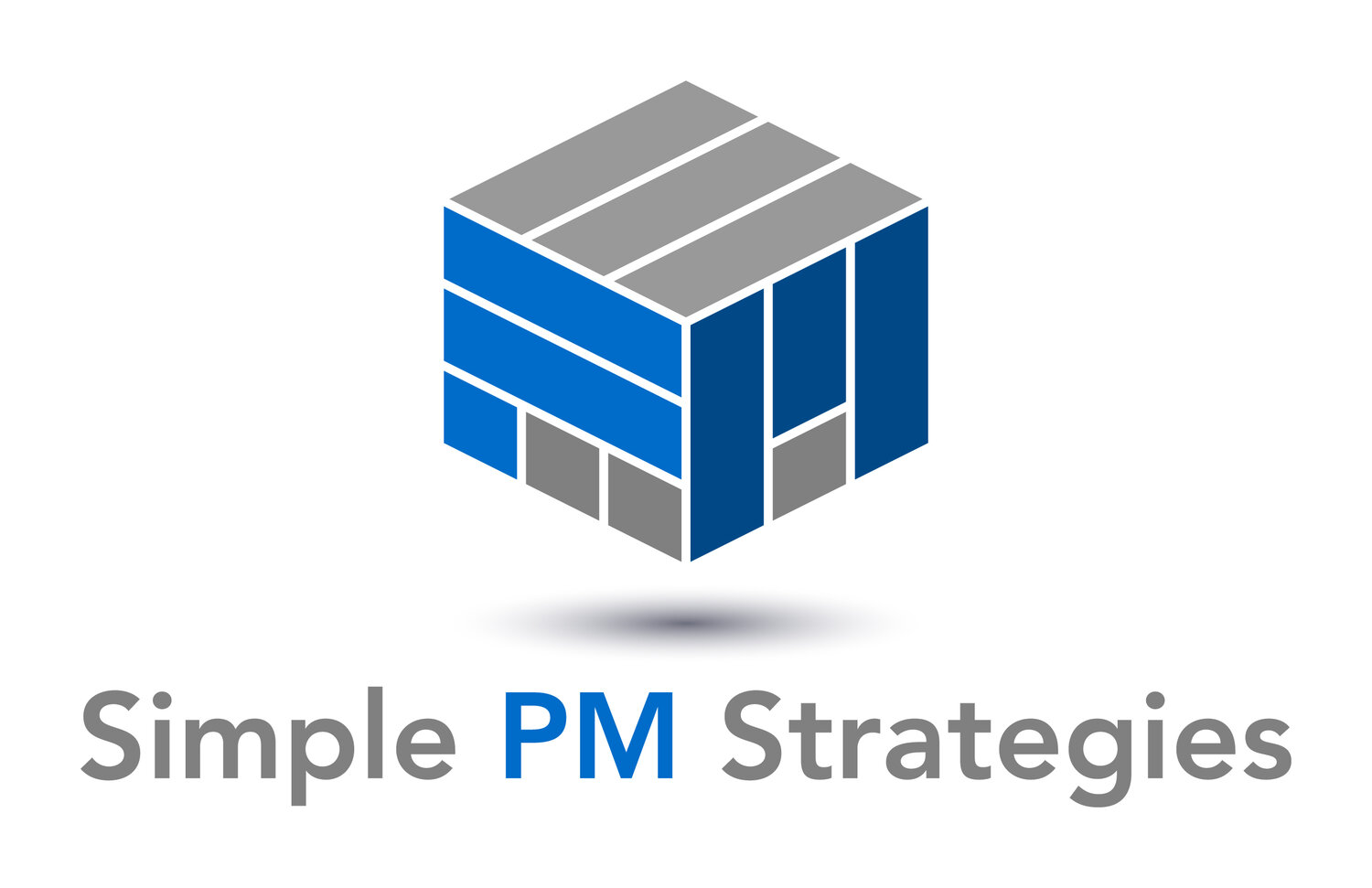A Simple Framework for Testing for Your Project Deliverables
The purpose of this blog post is to describe a simple framework to follow for testing to ensure outcome acceptance and project success. Quality testing is under the CONTROL part and under Things in the Project Management MPM model.

Quality testing is under the CONTROL part and under Things
Test, Record and Make Decisions based on Quality Results
Quality is the term given to how your project deliverables perform based on what the project considers acceptable performance.
Quality is a measure of the conformance to requirements. The project sets those requirements, measures the conformance to those requirements and then makes a business-based judgement call on whether it is ready for the project’s customers to use.

The project defines acceptable quality conformance
In order to measure conformance to requirements and have evidence upon which to make those business-based decisions, the project needs to have a testing framework, define the tests that are used, execute those tests, score them, and then make the business decision.
A testing framework works best in a spreadsheet. Below there are terms defined to help you understand how to set up that spreadsheet.
In our workshops, registrants receive downloadable spreadsheets Google Sheets and Excel formats, ready to use with formulas and examples.
Define a Testing Framework
Create a spreadsheet with the following columns:
- Test ID – this provides a unique identifier and easy reference in communication and project documentation

Create a spreadsheet to track tests and execution
- Name – this is a brief label for the test. Keep to a few words to uniquely identify the test. Variances and lessons learned detail for naming these is covered in the workshops.
- Description – keep this to a sentence or two. The purpose is to understand the test case in the context of all other test cases.
- Setup – describe the set up needs to be done before the test can be executed and then the steps. You might find that it is most efficient to combine setup and steps. The final step in the setup describes what should be observed.
- Initials – who performed the test.
- Date – date the test was performed. ONLY USE the following date format: YYYY-MM-DD (you can use slashes instead of dashes). It is non-sensical and illogical to use any other format because this is the only one that allows sorting and you may need to sort the tests on date.
- Result – this is optional. The tester can put the actual result that was observed here. The important thing is to identify the score. If the test passed, the result is the same as the final step in the setup.
- Score – Not Tested / Passed / Failed / Deferred
- Fail Code – Blocking, Workaround, Cosmetic
- Comments – for ideas or input from testers
Execute and Record the Tests
Scoring the tests and how to make business decisions based on the scoring is covered in an upcoming blog post.
Execute the tests whenever you have a deliverable that is considered complete and ready for the next stage or to be given to the end customer.
Document the overall score for that testing sequence, for that gate or product release, and include a description of the non-conformance and justification for proceeding despite the non-conformance.

Execute, record and review the overall score for acceptance
It is advisable to get customer acceptance for proceeding despite a non-conformance.
Use one spreadsheet for each test cycle because they can then be sorted in a single folder.
Tests are added as more is discovered and understood about the solution, even after the customers use it. Therefore, test spreadsheets, even from a previous week can are often superseded or obsolete once new tests are added.
Name the test spreadsheets as: AbbreviatedProjectName StageGate Version.
You may find that if your team is testing over several weeks, and going through a half-dozen test cycles, for each new cycle, you can just copy the old sheet, rename it by incrementing the version number, open it up, clear the contents of the six columns from Initials and to the right and then you have a fresh test spreadsheet, ready to go.
In our vehicle purchase project, for example, a name could be “VehiclePurchase TestDrives v03.”
Summary
Quality is relative. It is a measure of the conformance of the project outcomes to the requirements of the project.
The degree of conformance is up to the project to decide.
In order to measure conformance to requirements and have evidence upon which to make business-based decisions about acceptance, the project needs to have a testing framework, which works well in a spreadsheet with repeatable tests, corresponding scores, and if failure occurs, the type of failure.
Action Steps / Apply This Knowledge
- Add the test framework headings above into a spreadsheet and add in at least 6 initial tests. Make sure the setup has the steps so that anyone can run the tests by following the steps.
- Run the tests through a cycle and describe any failures. You’ll find it is quite acceptable to have failures.
- Summarize your statistics. It can be very empowering to declare that you have executed your conformance tests and then present your results. It provides credibility and confidence.
Learn More
In an upcoming workshop, for which you can subscribe to be notified when it’s available, we cover project management examples in detail.
Also, in the workshop, we go into greater depth on many of the project management items in the Project Management MPM model. As well you can ask questions about any of your current projects during the Q&A.
CONTROL - Quality Test Framework
© Simple PM Strategies 2021
